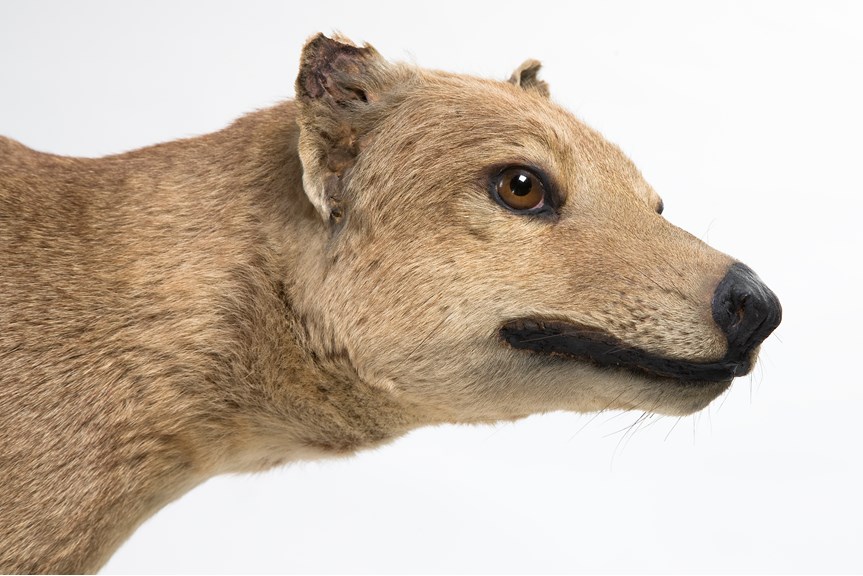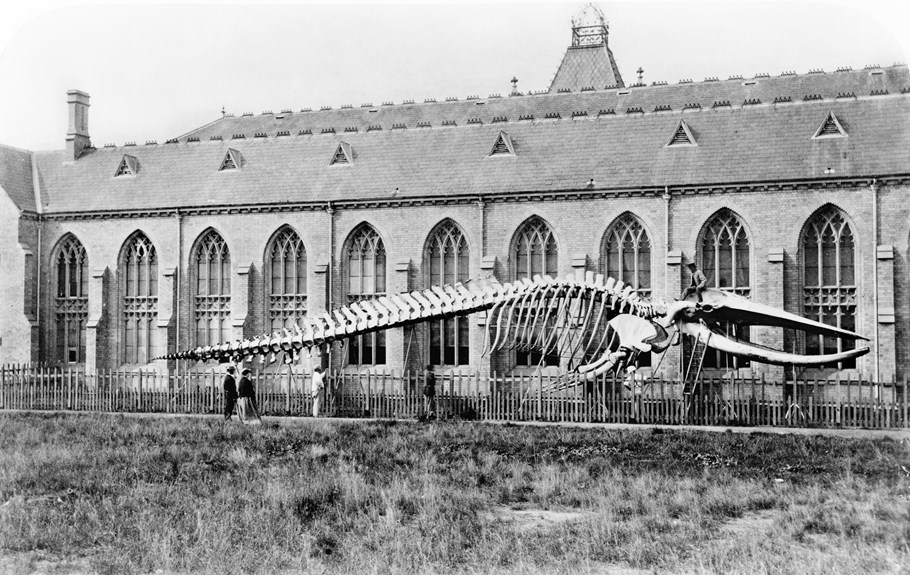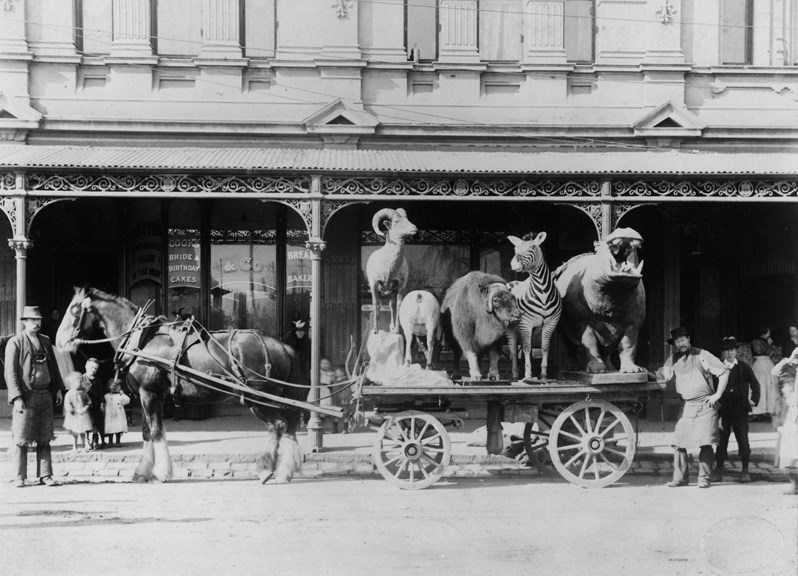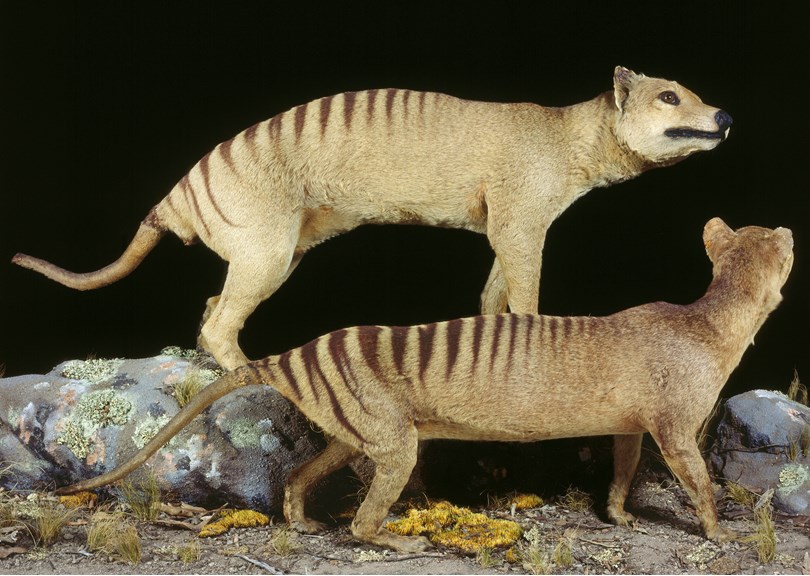Letter from a Tasmanian Tiger
A Tasmanian Tiger, who caught the eye of an inquisitive visitor
Have you ever wondered what the Melbourne Museum’s most popular specimens and objects would say if asked to tell their story?
What would you want to know?
In 2018, one of our visitors wrote to ask us about a favourite specimen.
‘Whenever I visit the museum, I like to have a quiet moment standing in front of the Tasmanian Tiger on display in the taxidermy section.
‘I am wondering (an odd question), was this specimen ever given a name?’
And although this Tasmanian Tiger is no longer on display—to help preserve it for many years to come—it's high time he gets to tell his own story.
I’m a male Tasmanian Tiger, or thylacine, but I’ve never been given what you’d think of as a proper name.
My scientific name is Thylacinus cynocephalus, and my registration number is C 28745.
These help to identify me, as the museum has many more Tasmanian Tiger specimens in the collection.
I’ve been at the museum for more than 150 years.
A lot has changed in that time.
When I first arrived on 12 January 1869, the National Museum of Victoria (as it was known then) was part of the University of Melbourne’s Parkville campus.
Back then the museum had two taxidermists, John Leadbeater and William Kershaw.
The care they took in preparing me is part of the reason I’m still around and in such good condition today.
Although my memory is a little fuzzy, I think I was on display on the mezzanine floor which was devoted to zoology specimens.
In 1899 the museum moved to a new home in Swanston Street, where the State Library of Victoria still stands.
Even though it was only 1.5 kilometres, the trip was not a luxurious one.
I was moved with the other taxidermy mounts on the back of a horse and cart—it took quite a few trips to get us all there!
Once I settled in though, it was pretty comfortable at Swanston Street.
I even got to share a diorama with a female of my species, C 28744, for many of those years.
We were there when the last known Tasmanian Tiger died at Hobart’s Beaumaris Zoo in 1936.
Museum specimens are all that is left of us now, which makes us extremely rare and valuable.
After a century in one place, it was time for a change of scenery.
We moved to our new home at the Melbourne Museum in the Carlton Gardens in 2000.
I was on display in the Southern Diversity exhibition until 2009 before moving to the much-loved gallery, Wild: Amazing Animals in a Changing World.
Since saying goodbye to my friends from Wild I’ve been taking a well-earned rest.
My conservator says I have splits in my ears and cracks in my tail.
I’ve also lost some fur and a few claws, but I think I look pretty good for my 150+ years!
Thanks for your interest in me, it means a lot.
You can still visit me via the Museum Collections Online, and don’t forget to come back to see my friends on display at the Melbourne Museum.
Hopefully I’ll be able to see you again in the not too-distant future.
We love hearing about your connection to the museum's specimens. If you'd like to know more about any of them, please don't hesitate to ask!






